Adaptive Array Processing
Adaptive Array Processing including LMS, and LS algorithms
Conventional Beamformer
Contents
Background
Conventional Beamformer
Weight vector:

Correlation Matrix

Array output

Simulation Algorithm
- Generate signal for L element array
- Use Coventional Beamformer weight vector
- Calculate the array output y
- Calculate output SNR
- Calculate array Gain
Simulation Parameters
- Number of array elements:

- Element spacing:

- Propagation speed:

- Signal to Noise Ratio:
![$$SNR=[3, 10]dB$](/AdaptiveArrayProcessing/assets/images/convbeam/convbeam_eq18294479859807695878.png)
- Signal power:

- Noise power:
![$$\sigma_n^2=[0.5, 0.1]$](/AdaptiveArrayProcessing/assets/images/convbeam/convbeam_eq13393966298945296718.png)
- Number of samples:
![$$N=[10,100]$](/AdaptiveArrayProcessing/assets/images/convbeam/convbeam_eq01435062882172541283.png)
- Source direction:

- Steering Vector in the Look direction:
![$$\textbf{S}_0=[exp({j2{\pi}f_0{\tau}_l}),\ldots,exp({j2{\pi}f_0{\tau}_L})]^T$](/AdaptiveArrayProcessing/assets/images/convbeam/convbeam_eq10124848064666402770.png)
Where

Signal + Noise Only
Array input

Correlation Matrix

Signal to Noise Ratio

Array Gain

Simulation
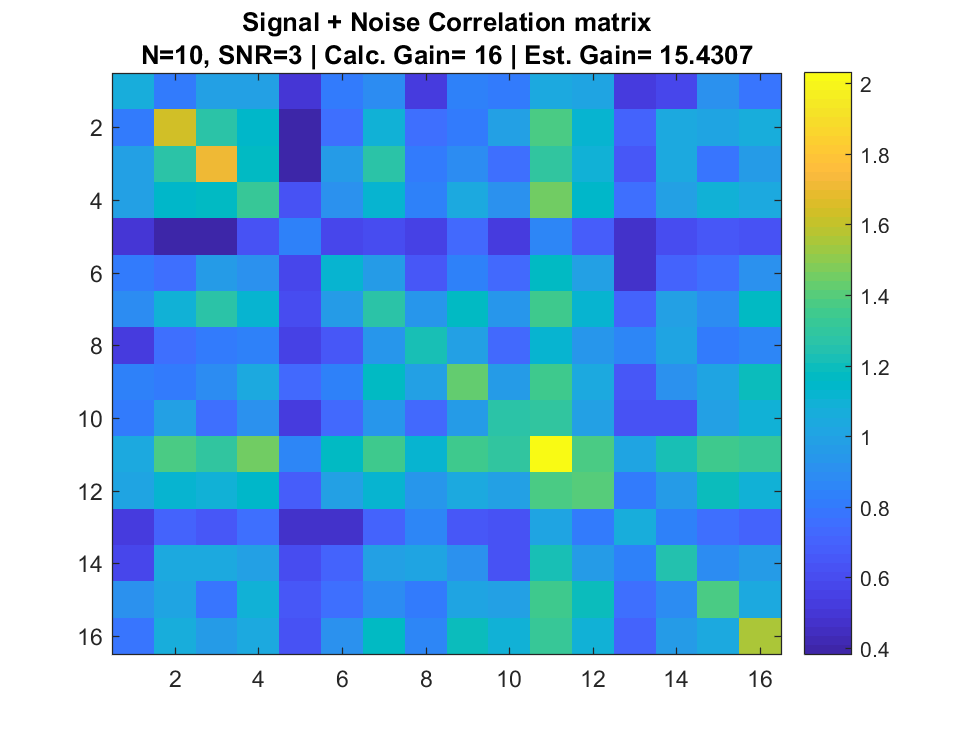



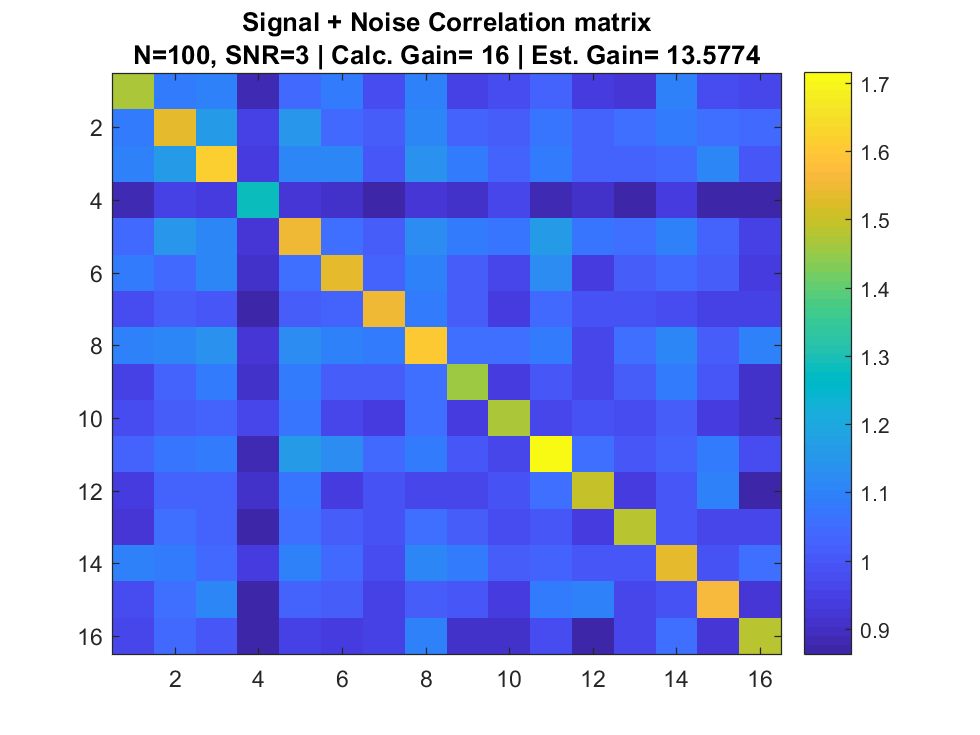

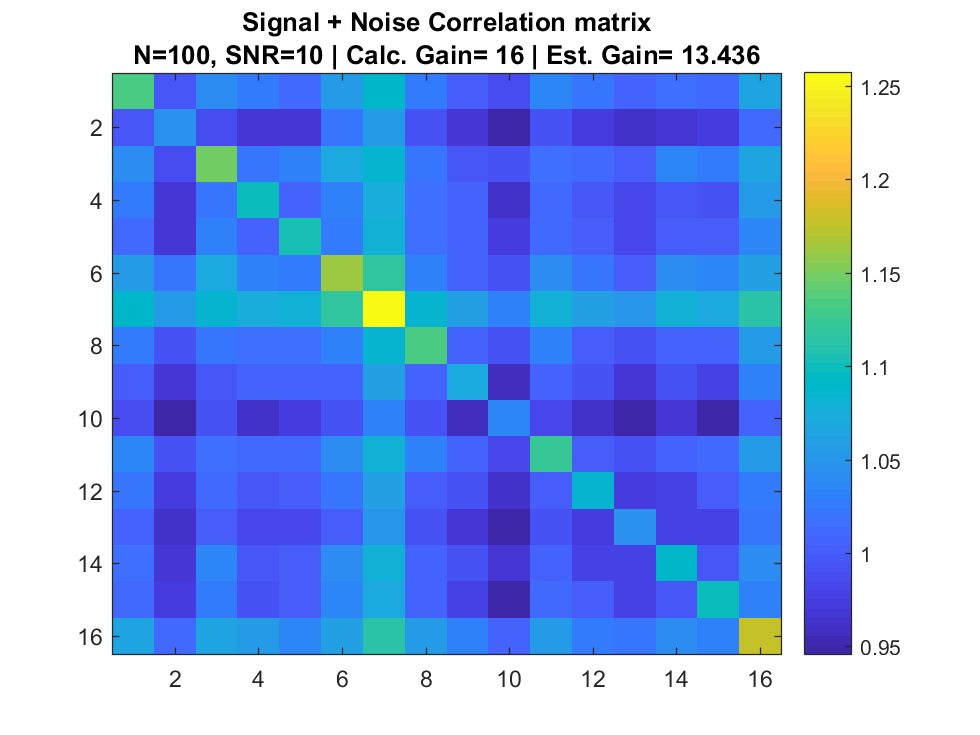
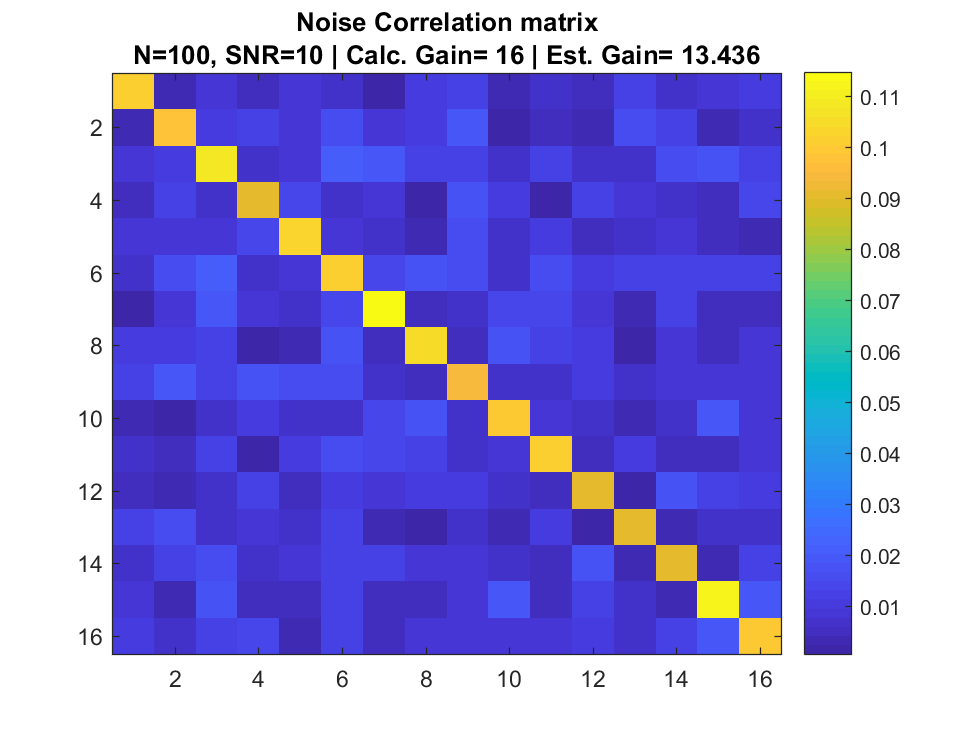

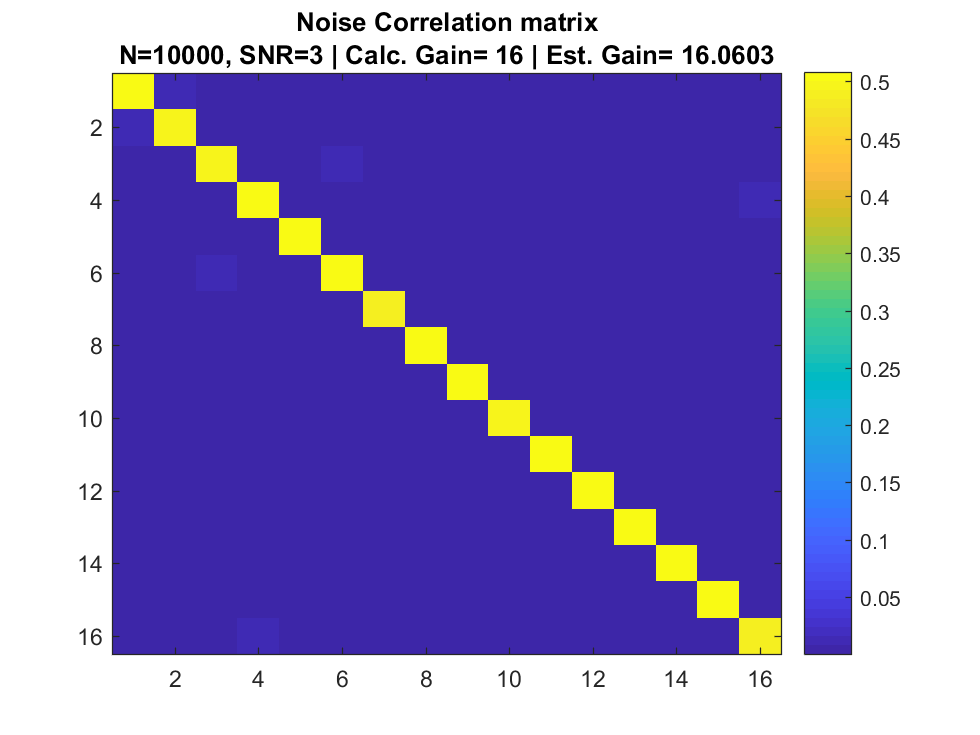
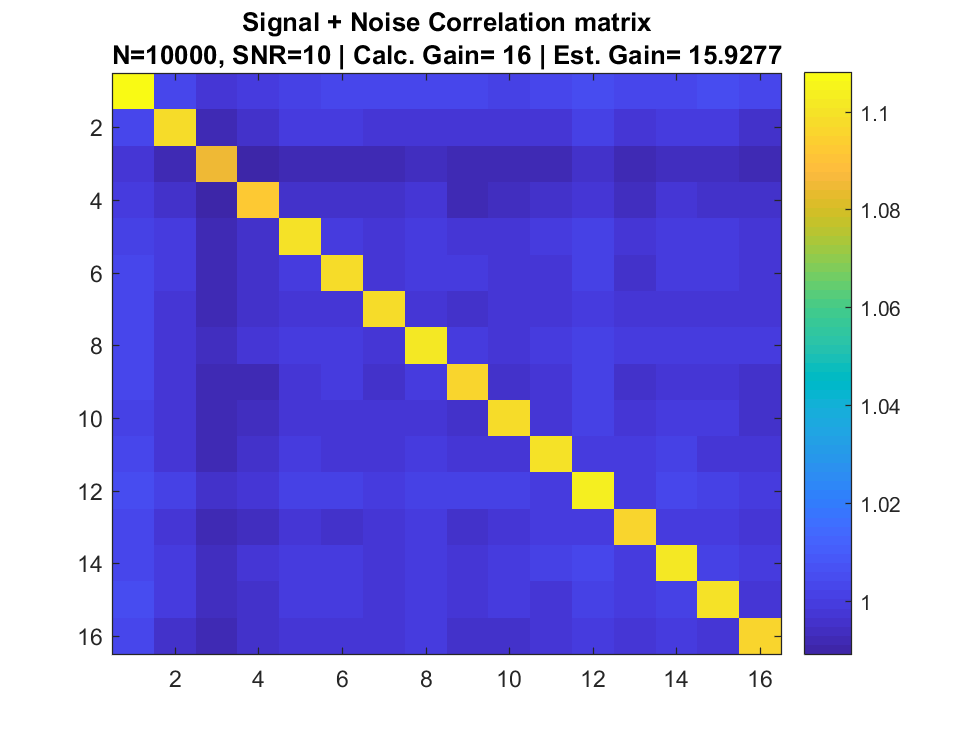
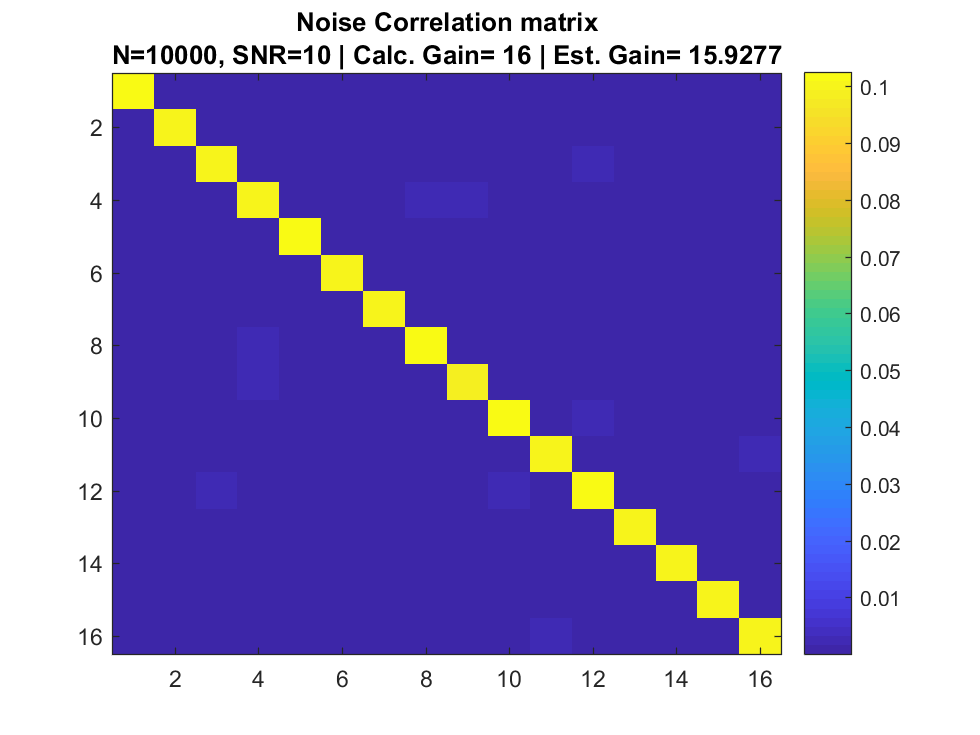
Signal + Interference + Noise
Array input

Correlation Matrix

Signal to Noise Ratio

Array Gain

Simulation
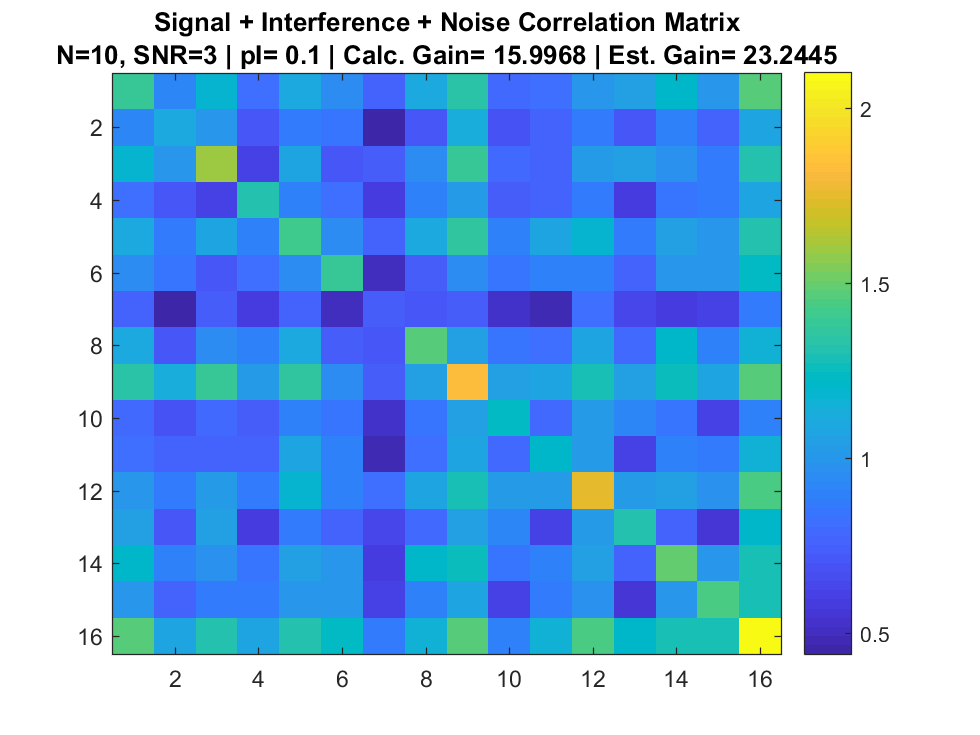


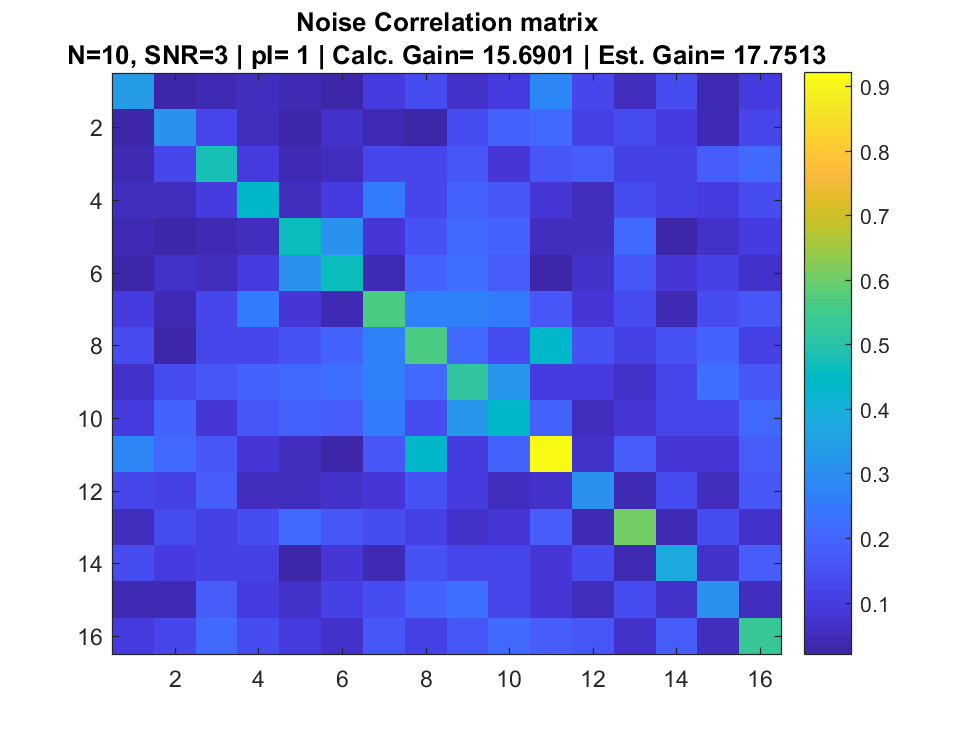


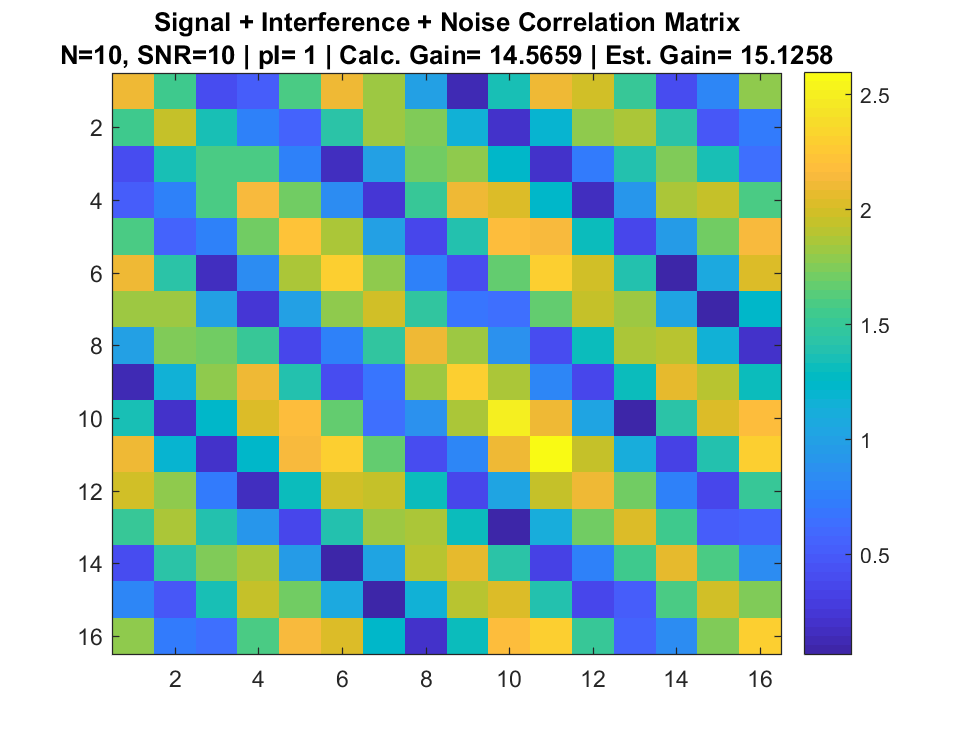
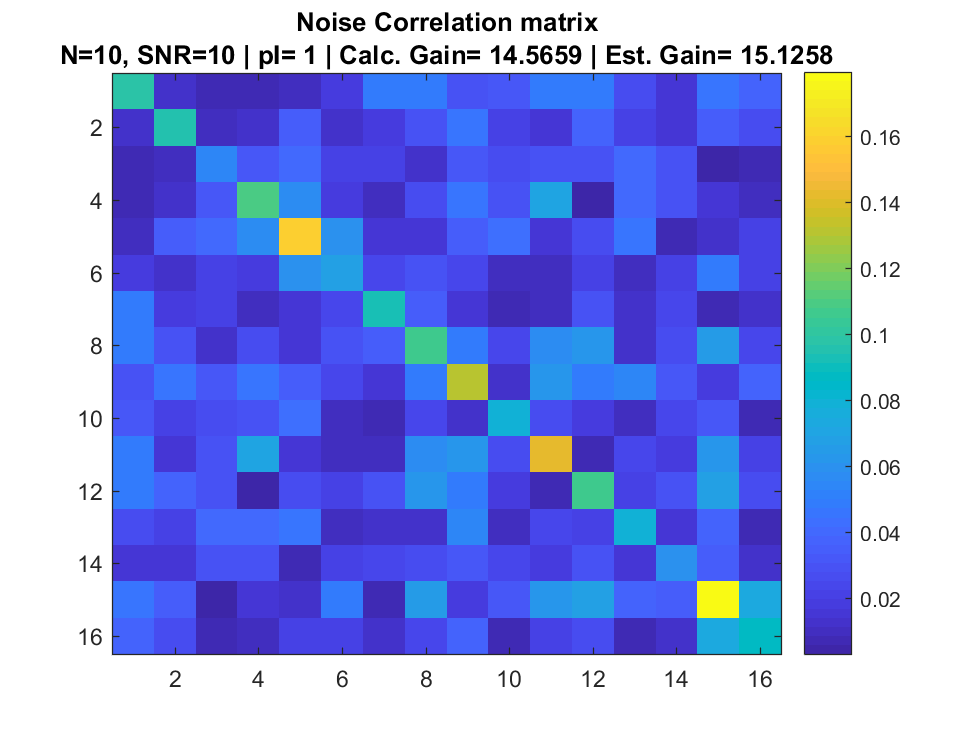

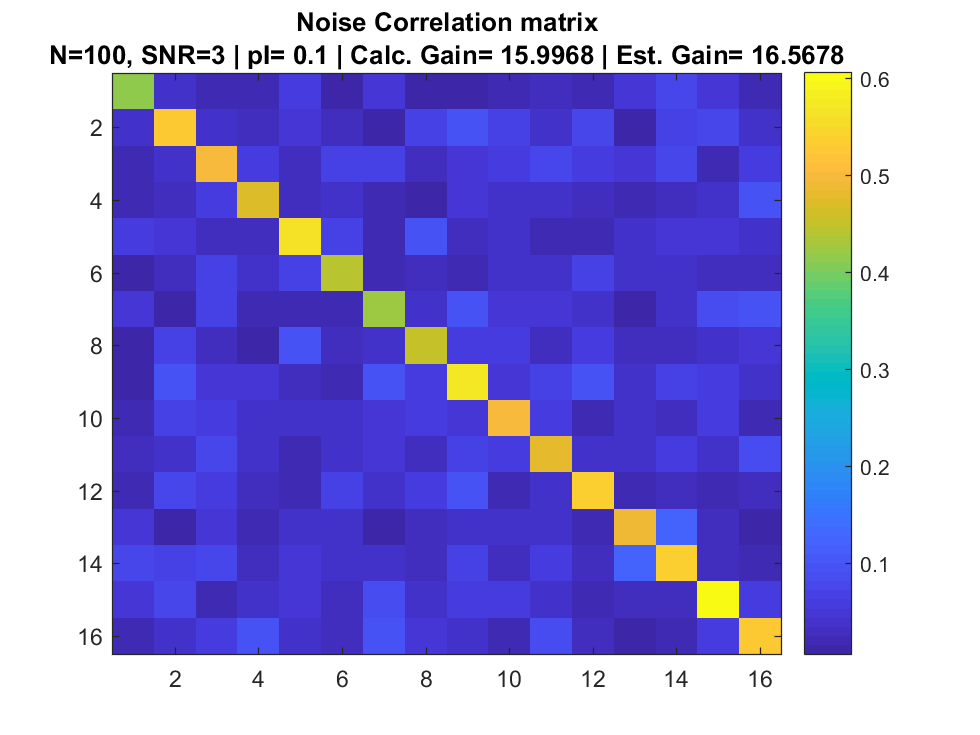

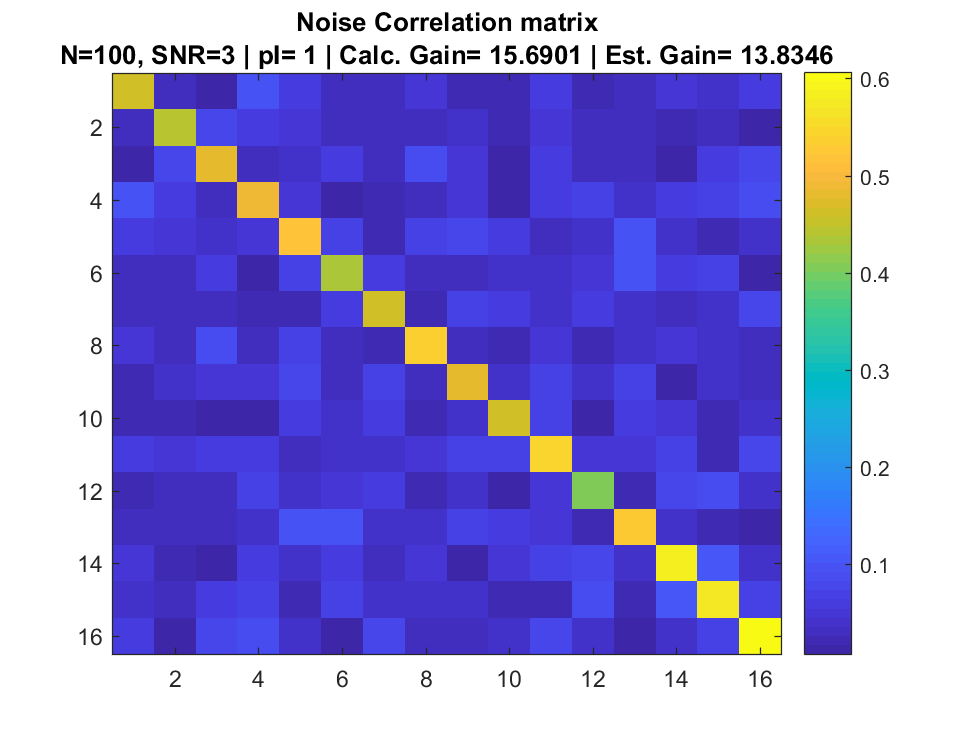
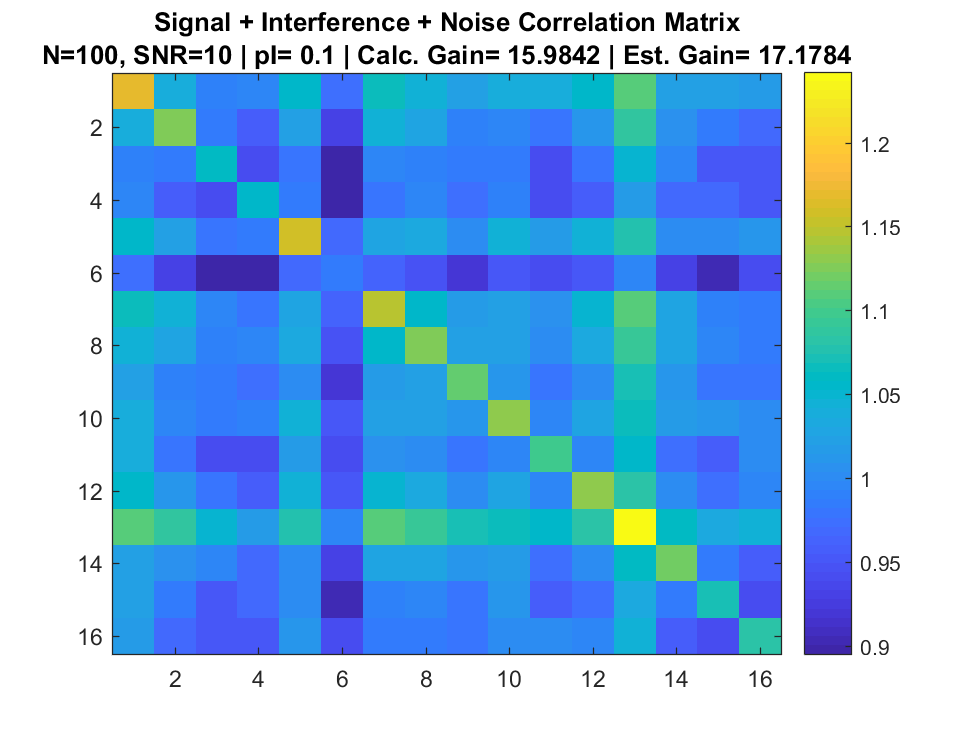
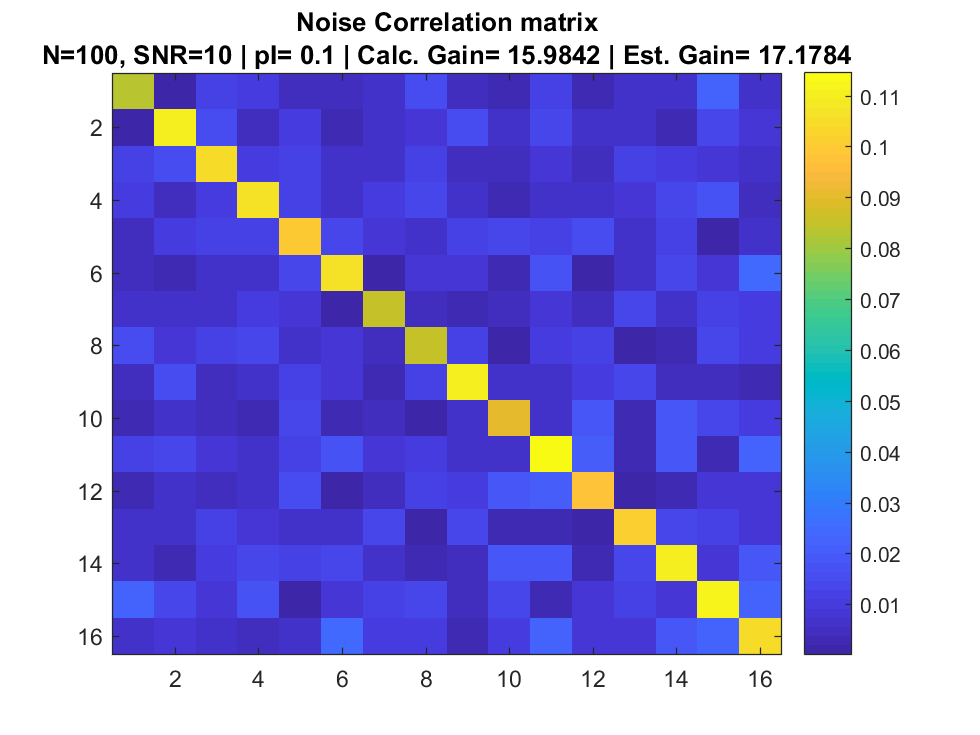

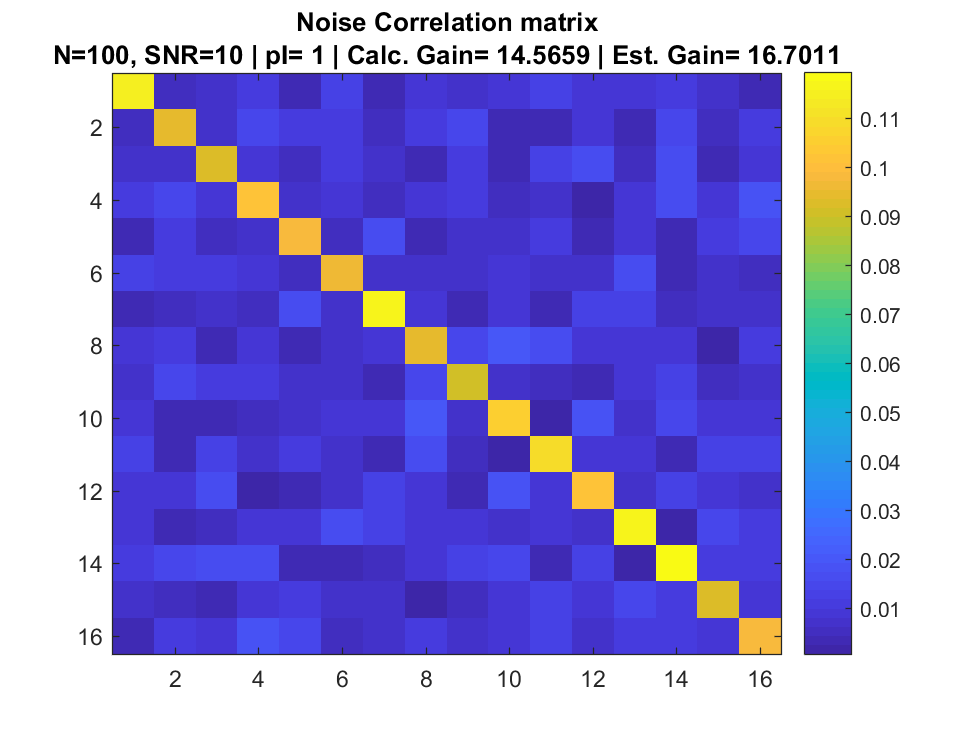

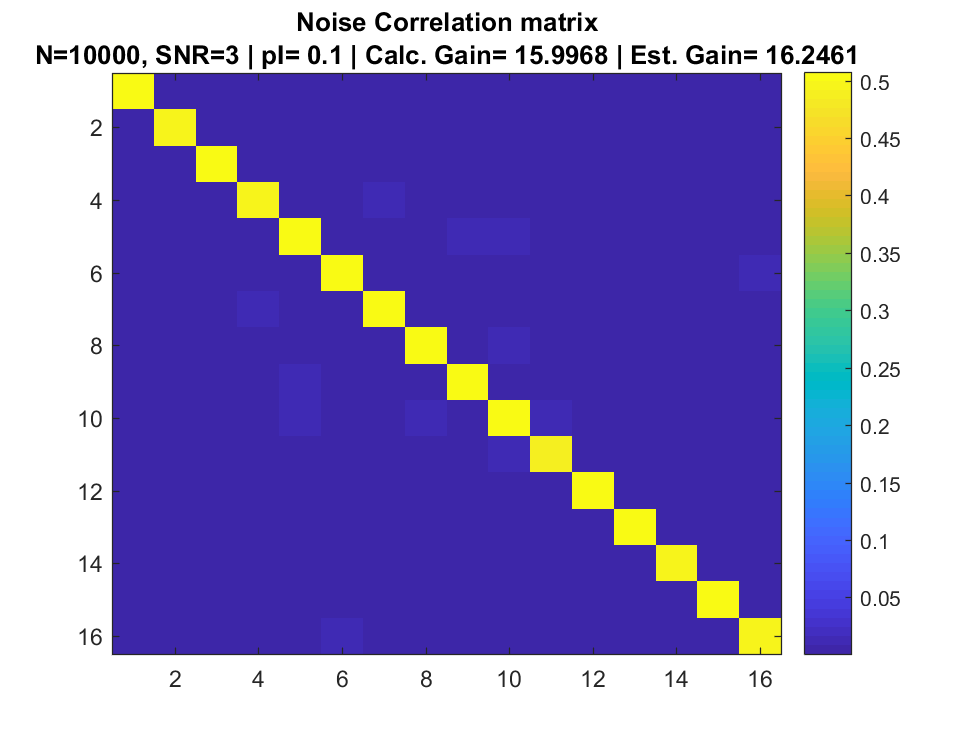
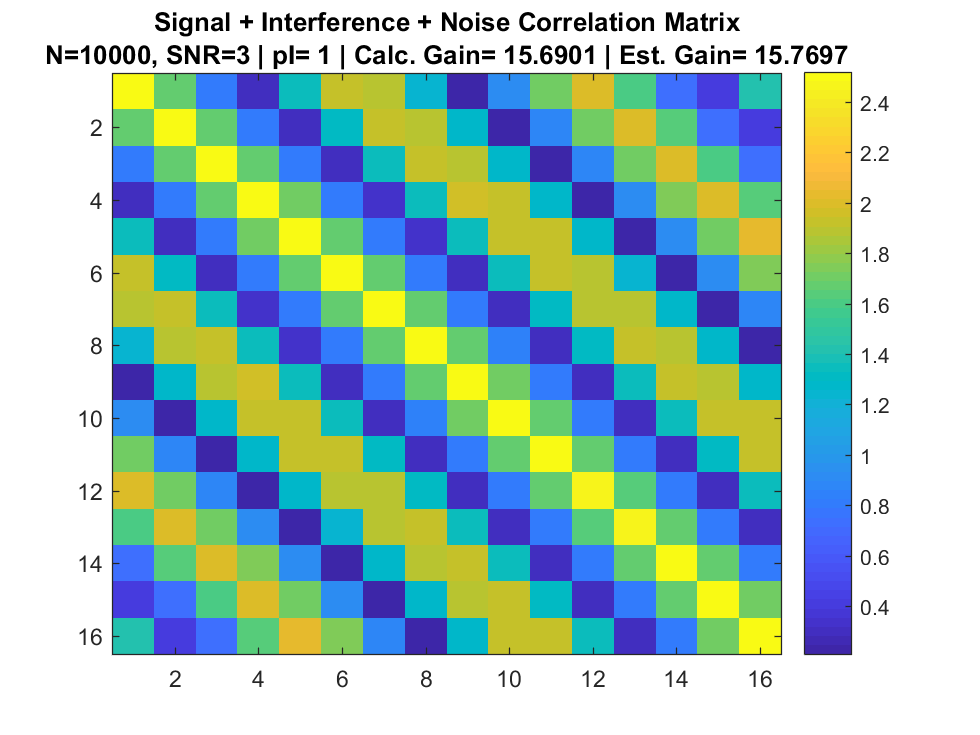
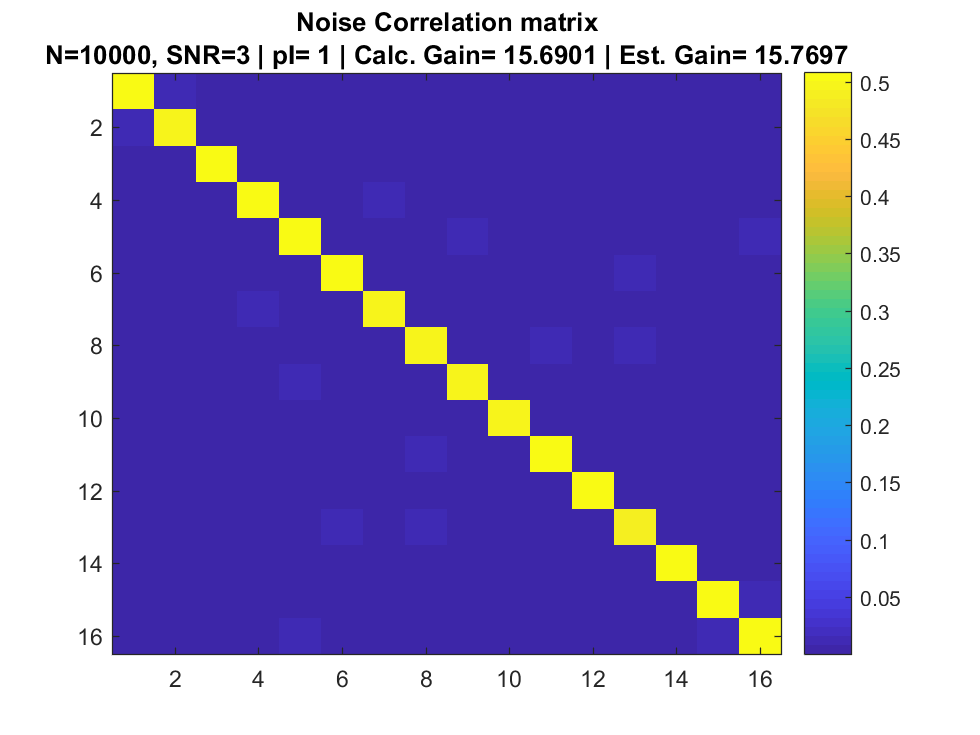
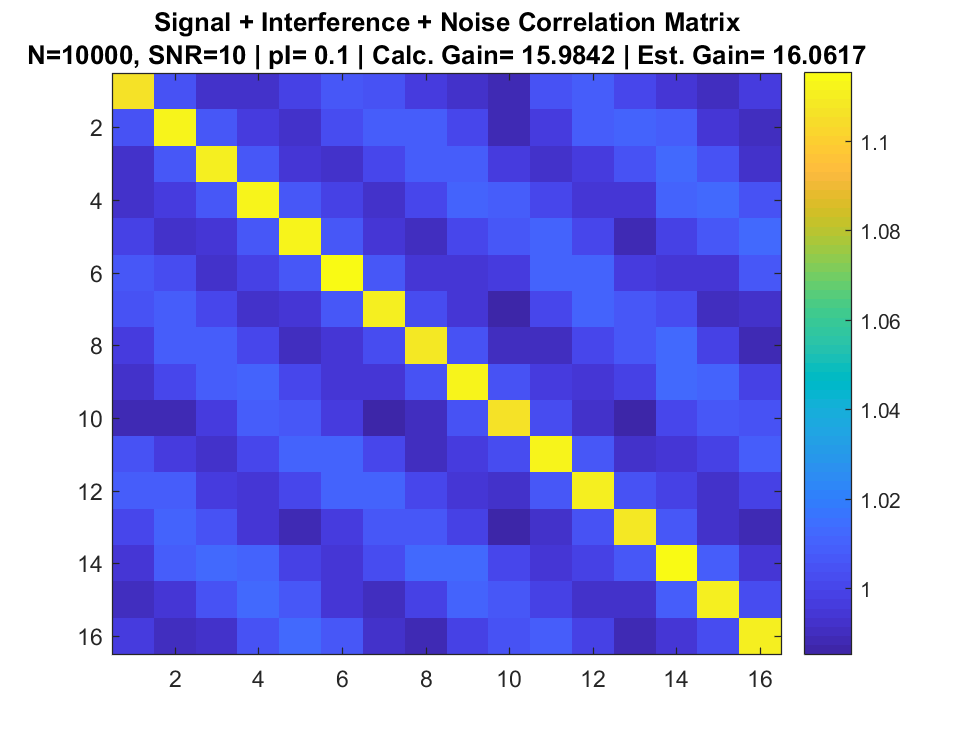
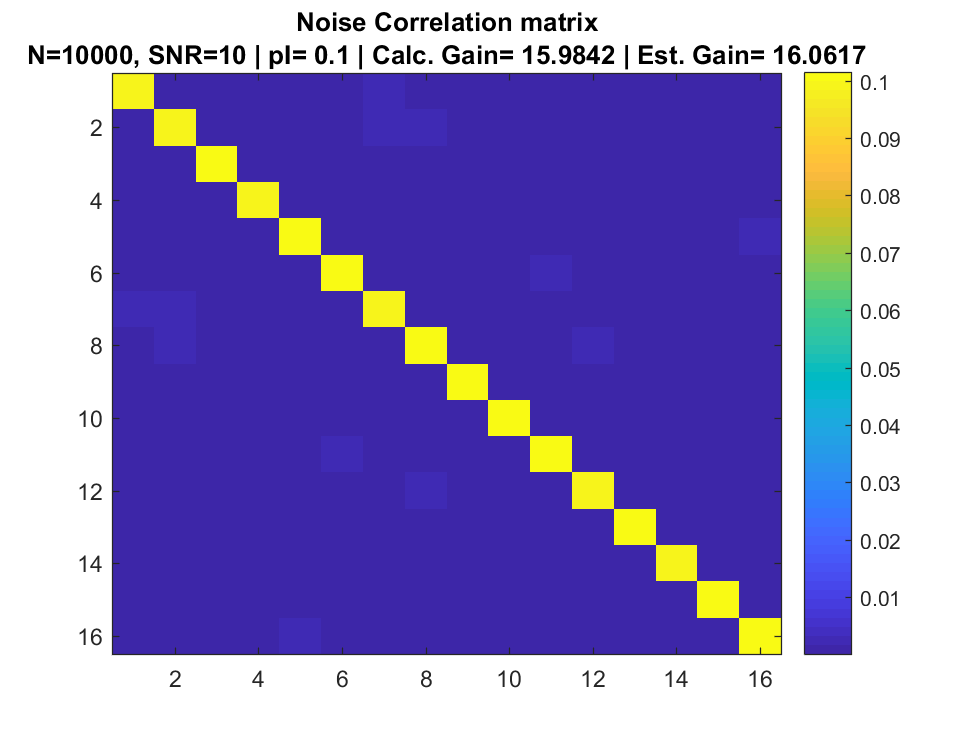
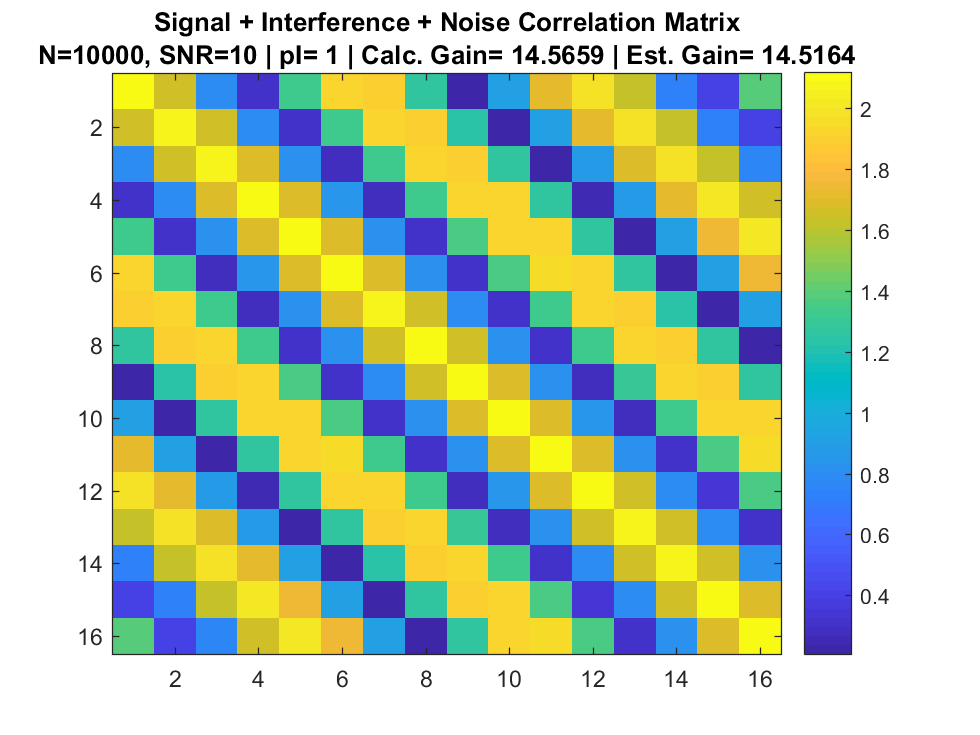
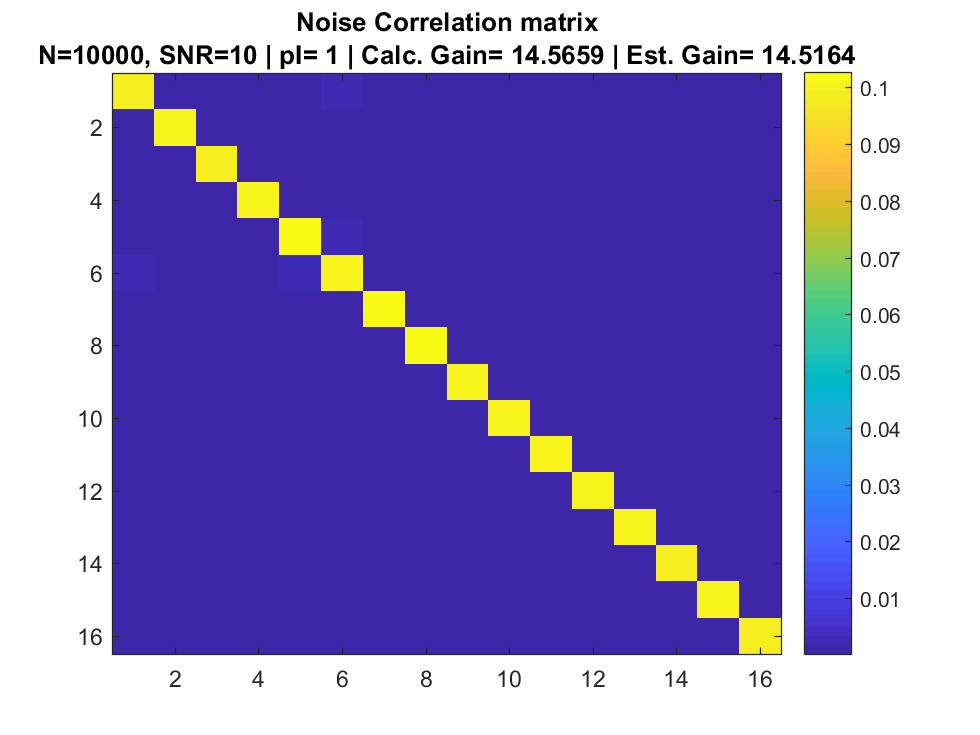
References
[1] L. Godara, Smart antennas. Boca Raton: CRC Press, 2004.